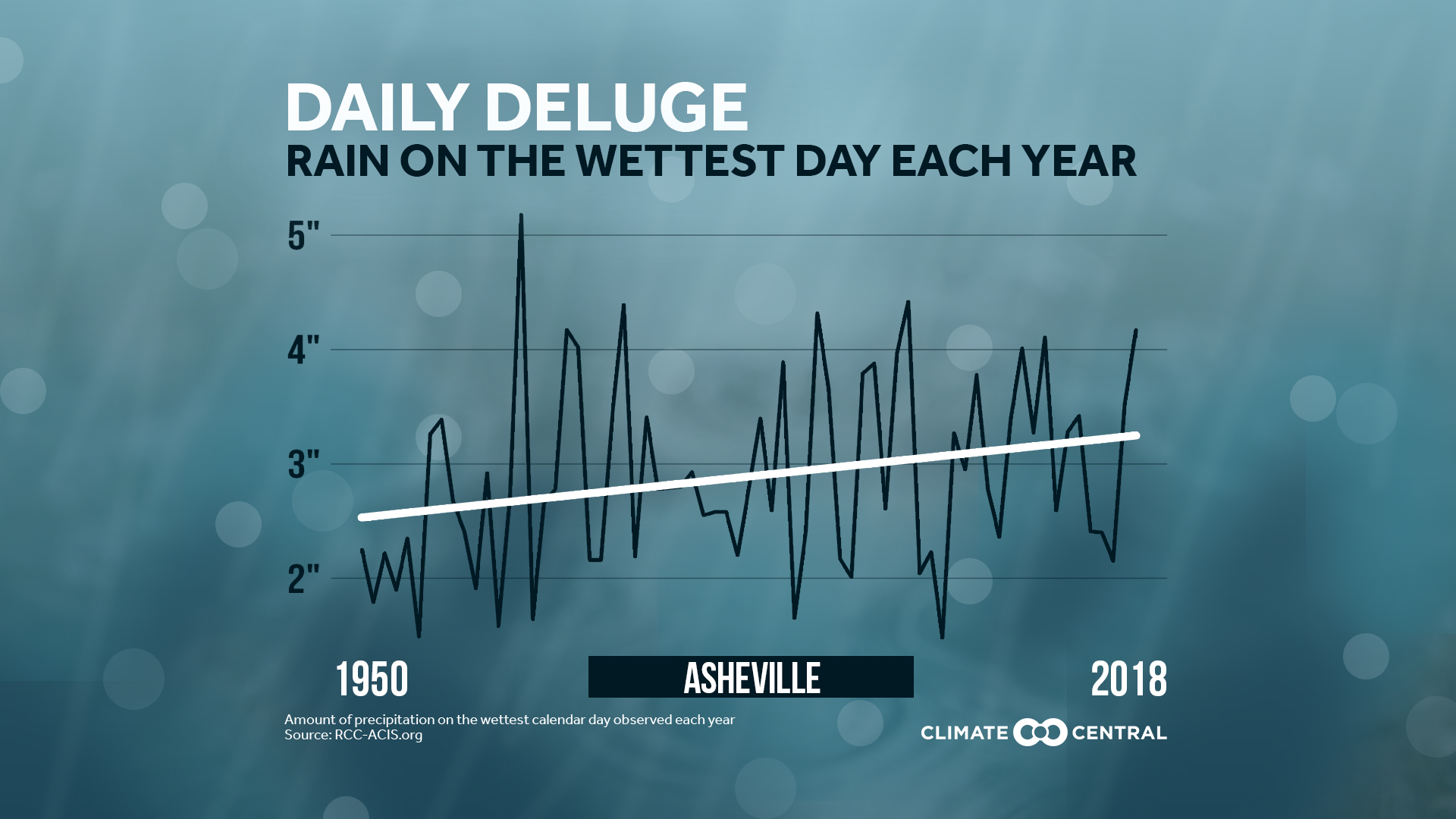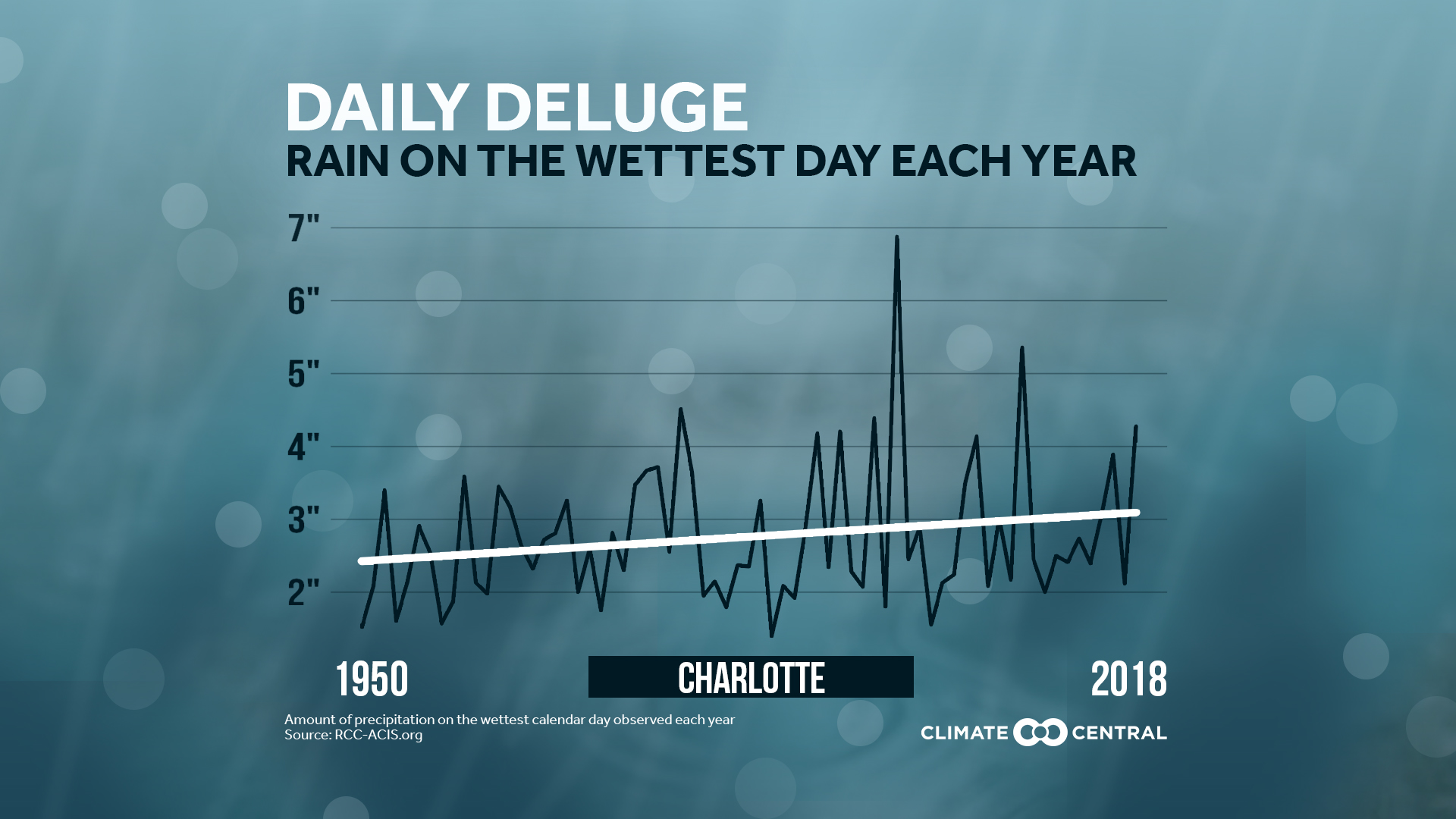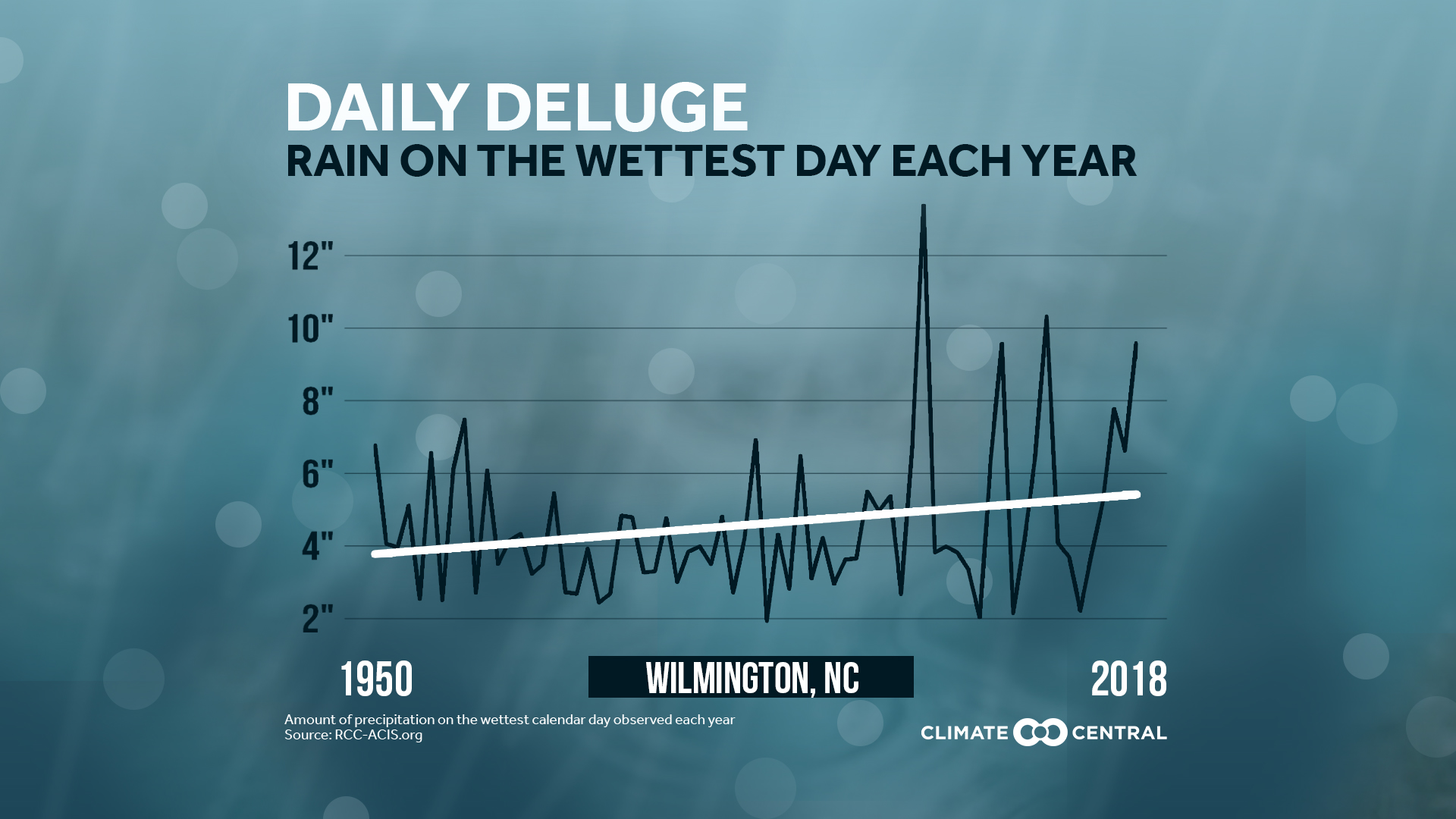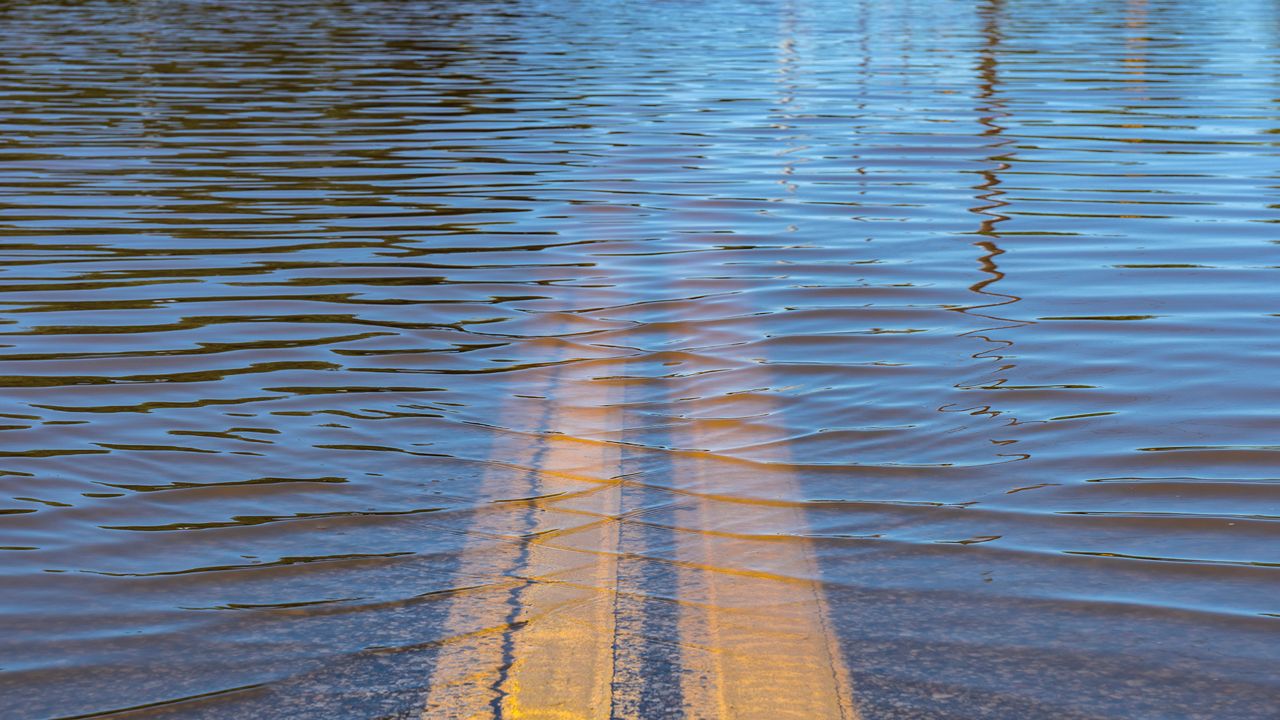Anytime we see heavy rain over a relatively short amount of time, flooding becomes a concern. There are signs those flooding concerns could become a larger issue in future years.
Just over a year ago, our news crews were on the scene of a tragic flooding incident in Johnston County. On the evening of Aug. 31, 2020, around 10 inches of rain fell near Smithfield, causing streams, creeks and rivers to rise rapidly.
Sadly, two children swept away by the floodwaters were later found dead.
While it’s not unusual for a thunderstorm to produce a downpour, up to 10 inches of rain in one evening is not typical.
There is growing evidence that storms are producing heavier rain. Research has directly linked that to our warming climate.
A warmer atmosphere holds more moisture, leading to higher rainfall amounts.
Climate Central, an independent group of scientists that studies our changing climate, recently analyzed rainfall data from 244 cities across the United States.
They found that 79% of those cities, including several in North Carolina, have seen their rainiest day get even wetter since 1950.




In 32 of the cities studied across the country, the average precipitation on the wettest day has increased by an inch or more.
The study also found that extreme downpours are happening more frequently.

Meteorologists could use your help in forecasting the localized flooding caused by the increasing extreme rainfall. The National Weather Service is recruiting volunteers to report the daily rainfall from their communities.



